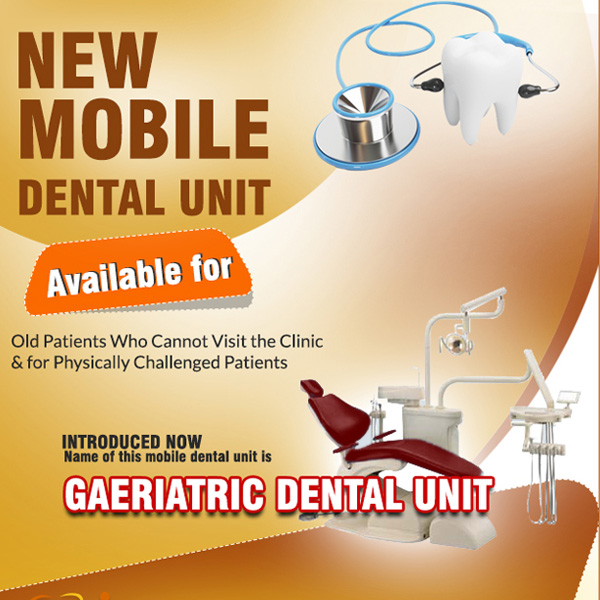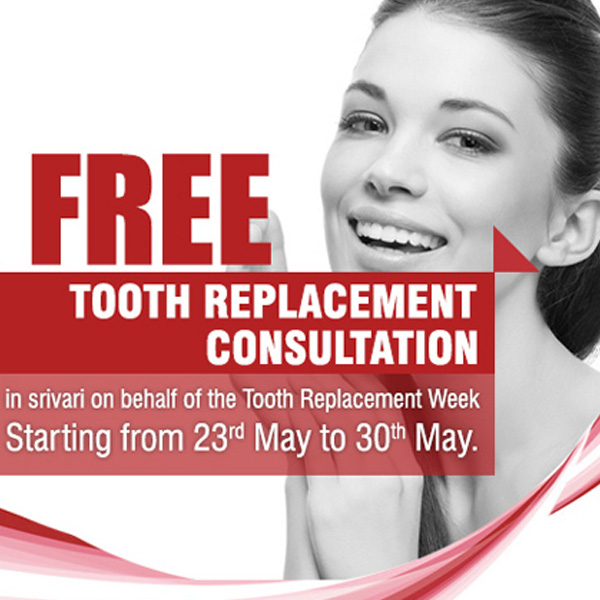Teeth can become damaged as a result of cavities, injury, erosion or attrition. Sadly, teeth damaged by the above-mentioned factors will not heal like most other tissues in the body. In most cases, this damage needs to be fixed to prevent it from getting worse and causing more serious problems.
There are now several tooth restoration options for those living with embarrassing and noticeable dental problems. Gone are the days when people had to live the rest of their lives being discontented with the look of their teeth!
At present, restorative dentistry offers several innovative methods which are used to solve these types of dental problems. Restorations are classified as either direct or indirect. Direct restorations are repairs made inside of the mouth (e.g., fillings), while indirect restorations will require more than one dental clinic visit and are fashioned outside of the mouth and then affixed to either the tooth or the supporting tooth structure (For e.g., veneers, bridges and crowns).
Which One will I need?
Direct dental restorations are typically used when the patient’s tooth (or teeth) is intact and are healthy enough to remain.
Indirect dental procedures are often required for patients having damaged teeth with more extensive damage and tooth decay. Indirect dental procedures involve applying synthetic dental substitutes to replace damaged parts of teeth or missing teeth.
At times, a patient will need both direct and indirect dental restorations to be done. What is suitable for you depends on the problem you're facing, but your personal preferences may also be able to play a role in your decision making.
Direct Restoration
Direct tooth restoration procedure is completed from start to finish in one dentist clinic visit. The most common direct dental restoration is fillings for cavities.
Dental fillings:
Dental fillings are a conservative type of restorative dentistry treatment and often the least invasive. They are used to repair minimal tooth fractures, tooth decay or otherwise damaged surfaces of the teeth. Simply a dental filling is: when you have a cavity, part of your tooth is removed/ drilled, the decay is then removed and then the tooth area that was removed/ drilled is “filled” with dental fillings.
The “big four” in terms of fillings are composite, porcelain (tooth-colored) and gold/silver amalgam fillings. They are used to even out tooth surfaces for better biting or chewing. In many cases, patients with enamel loss resulting in tooth sensitivity, once the appropriate dental filling material is placed will notice a significant improvement or complete elimination of sensitivity. But in some cases, depending on the extent of tooth decay or damage, the affected tooth may require additional procedures, including dental crowns, Dental implants or root canals.
Direct dental bonding: Another form of direct restoration is direct dental bonding. This refers to the procedure in which a putty-like bonding agent is used to reshape teeth, reduce gaps between teeth or repair cracks. The bonding agent is placed on your tooth by the restorative dentist, shaped and tinted to match the optimal aesthetic of the tooth and cured or "dried" in place on your tooth with a curing lamp. Direct dental bonding is more popular for anterior teeth (teeth located in the front of your mouth) due to ease of placement, elimination of the laboratory appointment and excellent aesthetic results.
Indirect Restoration
While some people refer to dentures as a form of indirect restoration, however, the term typically applies to a permanent or semi-permanent dental fixture rather than a removable one. Indirect restorations can enhance the aesthetic appearance of your teeth or provide a more stable, longer-lasting solution when the damage is severe or extensive.
Among the most common indirect restoration options:
Crowns: Also known as caps, a crown is a dental prosthetic that is used to protect a badly-damaged tooth. Crowns restore the appearance of damaged, chipped or cracked teeth to its normal size. Their primary objective is to protect and repair teeth with a custom-designed tooth material (much like a fitted cap). Crowns are also often used after a root canal has been performed on a tooth, in conjunction with other prosthetics like bridges and implants, and to restore teeth that have been severely damaged by trauma.
There are several instances where the need for a crown is obvious (like a broken tooth), but oftentimes, the “need” for a dental crown is not apparent to the patient. Here are some “it’s not broken” instances that need a dental crown.
- A tooth with old fillings where there now exists more filling than tooth. The existing tooth becomes damaged and can no longer support the filling.
- Compromised aesthetics and discolorations.
- To protect a tooth that had a root canal as the teeth tend to become brittle and are more apt to fracture.
- When missing teeth are replaced with a bridge, the nearby teeth need crowns in order to support the replacement teeth.
Bridges: when it comes to replacing multiple damaged or missing teeth, a dental bridge is one of the more affordable options. Just like the ‘Bridge’ which is a fixture placed over a gap to join two unconnected objects, a dental bridge is simply the term for when one or more crowns are splinted together to wrap and swap multiple, damaged teeth.
A dental bridge consists of two parts: crowns placed on the two natural teeth closest to the gap and artificial teeth held in place with the crowns. A dental bridge is good for persons who have a missing tooth or teeth and have healthy teeth on either side of the gap left by the missing teeth.
Veneers: also known as indirect dental bonding, they are thin shells of porcelain that can cover or replace the enamel of a damaged, misshapen or stained tooth. They are manufactured using an impression (mold) of your teeth and sent to the dental laboratory and a dental technician makes the dental bonding or restoration "indirectly" on the replica. The restoration is then fixed to your tooth by your dentist.
They are especially sought-after as their color and translucency mimic your natural tooth enamel. They are recommended for large restorations in order to reduce the shrinkage that naturally occurs as this material sets (dries or cures).
Dental implants: the dental implant is designed to replace a tooth too damaged to be saved. A dental implant is a tooth "root" artificially placed in your mouth to support a dental prosthesis such as a denture, crown or bridge. This is currently the best - if not the only long-term option for tooth replacement. A dental implant is used to replace the entire structure of the tooth, including the root.
The procedure utilizes a titanium fixture surgically placed into your jawbone and it fuses around the jawbone serving as a root for the missing tooth (which replicates the function of a tooth’s root). The replacement tooth is then attached after the jawbone and the fixture are fused together. Dental implants have almost no impact on adjacent teeth and they are vital in preventing jawbone erosion.
When it comes to feel and appearance, the only difference between dental implants and real teeth is that it is not real teeth. They are tailored to look, feel and fit precisely like all the other teeth in your dental collection.
 Srivari Dental clinic is the multispecialty dental clinic in Ramapuram, Chennai that provides top quality, affordable dental care in utmost hospitable environment for the best tooth enamel restoration in Chennai. They take pride in providing the best clinical dentistry possible by utilizing the most advanced equipments and techniques available. At the dental clinic, they make it certain that the hygiene and sterilization protocol is strictly followed. From regular dental checkups to complicated full mouth rehabilitation, all the aspects of dentistry are provided in the clinic such a way that you receive a high-quality care and treatment.
Srivari Dental clinic is the multispecialty dental clinic in Ramapuram, Chennai that provides top quality, affordable dental care in utmost hospitable environment for the best tooth enamel restoration in Chennai. They take pride in providing the best clinical dentistry possible by utilizing the most advanced equipments and techniques available. At the dental clinic, they make it certain that the hygiene and sterilization protocol is strictly followed. From regular dental checkups to complicated full mouth rehabilitation, all the aspects of dentistry are provided in the clinic such a way that you receive a high-quality care and treatment.
 Mail Us: srivariclinicchennai@gmail.com
Mail Us: srivariclinicchennai@gmail.com
Book an appointment: chennaidentalclinic.in/book-appointment.html












